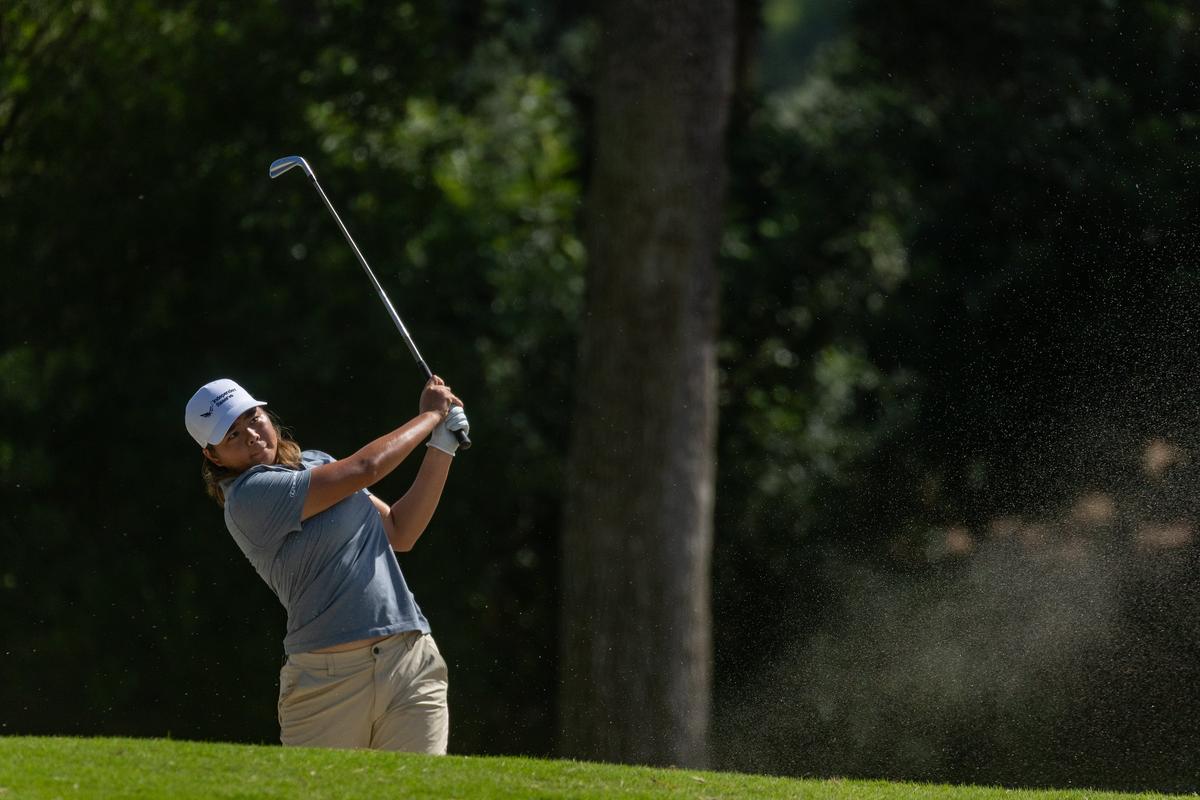Fairway of promise: Hitaashee Bakshi and the rise of Indian women’s golf
For a brief while, it looked like the drought of a home winner at the Hero Women’s Indian Open golf would finally be over. In the 17 seasons of its existence, the marquee event of the sport in the country has only had one Indian lifting the trophy.
That it did not happen, and Hitaashee Bakshi faltered when it mattered most on a dramatic final day that saw hold-ups, swinging fortunes and unexpected results.
With close to 120 golfers from 31 countries in action over four days in the middle of an unexpectedly clear October, the tournament has come a long way from its humble beginnings. In many ways, it mirrors the growth of women’s golf in a country that continues to see it, along with a few other sports, as the domain of the privileged.
“We started the Women’s Golf Association of India in 2004 as Champika Sayal’s brainchild to have a professional tour for women in the country. We had some great players like Anjani Desai and Nonita Lall Qureshi, but they were amateurs; it wasn’t possible for them to carry on playing and make an income out of the sport. We started with four to five girls, putting in ₹10,000 each, along with Satish Tandon, who was our first president, to get it off the ground. The first Indian Open was in 2007,” WGAI president Kavita Singh told Sportstar.
From 79 entries back then with a prize purse of $100,000, the event has grown into a $500,000 tournament this time around. From only being an Asian event to being co-sanctioned by the LET (in 2010) and drawing entries from all the top European nations, it’s been a steady rise for the event and for women’s golf. The inclusion of the sport in the Olympics has helped increase its visibility and, more importantly, ensured that it is taken seriously as a sport.

Twist in the tale: Shannon Tan, who started the final round seven shots off the lead, won the title in the most dramatic way possible.
| Photo Credit:
Ladies European Tour
Twist in the tale: Shannon Tan, who started the final round seven shots off the lead, won the title in the most dramatic way possible.
| Photo Credit:
Ladies European Tour
Back then, India’s top golfer Smriti Mehra was already a veteran of the professional world, ploughing a lonely furrow as the first Indian woman on the Ladies Professional Golf Association (LPGA) Tour — the top-drawer circuit in golf — way back in 1997. On Sunday, golf lovers’ hopes rested on a 21-year-old in her first full season on the LET.
Hitaashee had started well on the final day, a couple of birdies and a three-shot lead keeping her in the game through the first four holes. But the final-day jitters caught up with the youngster. Three bogeys in a row were followed by a horrendous double bogey on the par-5 eighth hole. Play got held up for almost 20 minutes as players and referees debated whether her tee shot had landed out of bounds before rolling into the water or within the course line. She eventually had to trudge back to the start for her third shot and never recovered.
England’s Alice Hewson, part of the leader group with Hitaashee and Pranavi Urs, risked little and stayed steady with a couple of birdies, parring the rest to cruise ahead, closing in on the trophy even as her closest competitor, Shannon Tan, sat in the clubhouse waiting for the formalities to be completed before flying home as the runner-up for the second year running.
Instead, the 21-year-old Singaporean, who started the final round seven shots off the lead, saw Hewson first hit her tee shot into the water and then miss an easy putt for a double bogey on the very last hole, to be handed the title in the most dramatic way possible.
For the home fans, however, it was the performance of the Indian golfers that held promise. Four Indians in the top 10 was unimaginable even a few years ago, despite Aditi Ashok’s victory way back in 2016 as an 18-year-old. Aditi, now a regular on the LPGA — the only Indian on the tour — even came close to a historic Olympic medal in Tokyo before a heartbreaking fourth-place finish.
Steady focus: Pranavi Urs in action during the final round of the Hero Women’s Indian Open in Gurugram. The Indian finished among the top contenders on a dramatic closing day.
| Photo Credit:
Special Arrangement
Steady focus: Pranavi Urs in action during the final round of the Hero Women’s Indian Open in Gurugram. The Indian finished among the top contenders on a dramatic closing day.
| Photo Credit:
Special Arrangement
Consider this: when the first-ever professional tour was launched in October 2006, it included five legs for a prize purse of ₹6 lakh with five players. This year, the Women’s Professional Golf Tour of India has 13 legs with 54 players vying for a total prize money of ₹229 lakh. Sitting pretty on top of the India Order of Merit is the experienced Vani Kapoor, with four wins and earnings exceeding ₹16 lakh. Vani, who has never missed a cut in her 13 appearances in the Indian Open, admitted it has been a learning curve. “It makes me feel really proud of myself that I’m still here, still giving them a fight. Obviously, I’m doing something right and that’s really good. When I started there were fewer girls and the organisation and all the golfing bodies were also growing with us — we were gaining experience together,” she said.
She agreed that perceptions played a big role and needed to change. “There’s this misconception that golf is an elite sport; the government definitely thinks so. That’s why they don’t provide that much financial aid to golfers. But most people who are playing golf don’t come from rich backgrounds. Today, if I don’t have a few sponsors, I cannot be playing golf. One cannot reach one’s true potential because we have so many constraints. Also, I’m a firm believer that every corporate house should support a sport. And then you see the results. You need support not just after you become a star, but before,” she shrugged.
Kavita, however, knows it’s a long road ahead.
“In the early days, we got no support from the government at all. I was turned down brutally by the sports minister and the tourism minister. We still barely do. If it were not for the corporate sector, it would have been very tough. But I want an Indian girl to win — maybe in the Olympics, maybe here. There’s no lack of talent in our country. It’s about discipline, consistency, and hard work. And the hunger has to be there. But I really hope we get an Olympic medallist,” she declared.
Published on Oct 24, 2025


